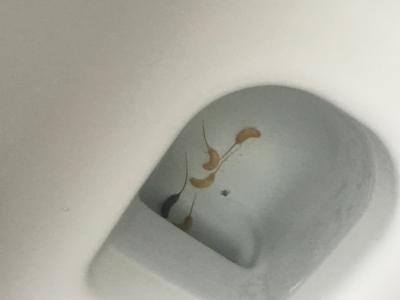Last week we were asked to identify a weird insect. At first glance they looked very strange - like a bean with a long tail - and in the bottom of a toilet bowl. Luckily, one of our team members, Mark, was able to identify them as drone fly larvae.
At the moment there is quite a lot of talk about flying drones in the news. These stories relate to various attempts to turn un-manned transportation devices into useful delivery machines, although, as this story demonstrates, the technology has not so far been perfected.
To my mind, however, the drone fly, or European hoverfly, is a far more interesting entity. The larvae, which is what we were asked to identify, have a very distinctive appearance. They tend to live in places containing water that is badly polluted with organic matter. They live in places like this because they consume the bacteria contained within the water. Their distinctive appearance has led to them being called, ‘rat-tailed maggots’, which is a fair description. Because they live in polluted water, and seemingly they enjoy the really putrid water, they use their extendible tail, called a ‘siphon’, like a snorkel. This ‘siphon’ allows the larvae to breath while it feeds on the underwater bacteria.
Once the larvae have grown to around 10-12mm in length they enter the pupa phase – as they retain the tail they look like tiny mice. Following the pupa phase they turn into the adult drone fly. To the untrained eye hoverflies look like drone honey bees, but are in fact harmless. This similarity of appearance probably developed as a defence mechanism – by looking like an insect that can sting, they have afforded themselves some measure of protection. In fact, they have only two wings, as opposed to the four of a bee, and they do not possess the narrow waist between thorax and abdomen.
Adult drone flies tend to live in meadows, hedgerows, and woodland edges although, as the picture shows, you can find them anywhere. They live for up to a year and feed on pollen, being frequent visitors to flowers – they are particularly fond of fennel and carrot plants. Because of this, they are very important pollinators in Europe.
Since they are unable to sting us, hoverflies offer very little threat to us as humans. However, there is currently a debate about human stomachs being afflicted with human intestinal Myiasis by the ‘rat-tailed maggot’ larva. It is probable that this is caused by people consuming infected food.
But back to more pleasant things...
While the larva may not be particularly pleasant to look at, they are not going to cause you any harm and can be easily removed. Since they feed on bacteria, cleaning the toilet with bleach will quickly deal with the problem. If you find them in a less visible position, it is probably just as well to leave them alone and they will help pollinate your carrots.
